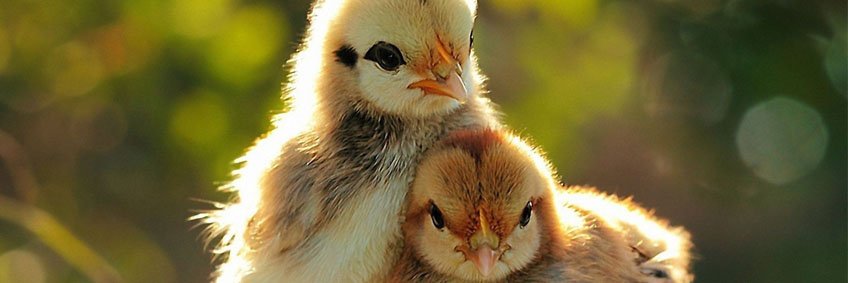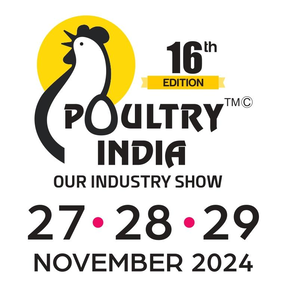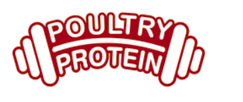Pullet rearing is key to cage-free flock success

Farmers are looking for three things when raising pullets: consistent weight gain, flock uniformity, and high livability. Cage-free husbandry makes achieving these goals much more complicated than in a conventional system.
In a conventional cage system, the amount of food, water and ventilation can be controlled and consistent throughout the pullet house. Dr. Nestor Adriatico, director of technical services for Hendrix Genetics, said in a cage-free pullet house, the birds have the freedom to move where they want, creating tense competition for food and water in some places and next to no competition in others – resulting in poor flock uniformity. Cage-free birds also run a higher risk of suffering from pecking, cannibalism, smothering and piling than their conventional counterparts as well as a greater risk of enteric diseases from manure exposure.
“While we depended greatly on our equipment like feeders, drinkers and ventilating fans in cage production in the achievement of our target body weights, flock uniformity and livability, we now need more animal husbandry skills in cage-free production … in order to achieve similar results as in cage production,” Adriatico said.
the birds’ ability to move around in the house is key for the success of the pullets. This puts the onus on farmers to monitor and control several variables – temperature, lighting, litter, equipment layout, aisle space and even the frequency they walk the house – in order to get the best bird performance.
“The better job you do with the management of these variables, the better the welfare of the flock and the better they will be able to make the transition into the layer house,” Snow said.
In order to help farmers gain some of those husbandry skills, Egg Industry magazine worked with bird experts from around the world to put together general best management practices for cage-free pullet rearing.
Avoiding disaster
Essentially, successful cage-free layer flock management starts in the pullet house. If pullets are not raised appropriately, they will not perform well as adults.
According to experts from equipment and genetics companies surveyed by Egg Industry, raising pullets in the same conventional rearing systems and then placing them in a cage-free house as adults will be disastrous. Birds will not be able to get food and water and their bodies will not be ready to survive in the system. Negative behaviors can potentially flourish, more eggs will be mislaid and performance will be far below expectations.
Frank Luttels, sales manager for Volito, said if you try and save money by using old cage pullet-rearing equipment with new cage-free laying equipment, then you will end up paying the price in worse performance down the road. Improperly raised birds are at a disadvantage in development and will have weaker muscle and bone structure than properly raised birds.
Transitioning from a cage to a cage-free system is stressful for birds because the layer barn is an unfamiliar environment and food and water are hard to find.
“This will result in a deterioration of flock uniformity as a significant number of birds will have a harder time learning how to jump to where the feed and water are located,” he said. “This will result in delayed onset of egg production, lower and less persistent peak egg production, more floor eggs and higher mortality.”
Salmet went one step further in its response.
“Cage-reared birds being moved into cage-free production systems will not work at all,” the company said. It will "lead to weak birds, cannibalism of weak birds, enormous amounts of floor eggs and, at the end, loss of the results of the entire flock.”
Additionally, more labor will be required to manage the house as workers will be tasked with collecting more floor eggs and placing the birds into the higher tiers of an aviary system to roost every night. More time will be spent on the floor and lower tier rather than the upper tiers and perches, and therefore more droppings will be deposited in the litter area rather than the manure belt, this can lead to more problems with ammonia and wet floors.
Creating the proper conditions
Successless flocks come from good management, and good management starts when day-old chicks are placed in the pullet house.
Pullets must be raised in a system that matches where they will live in the layer house. If a farmer is using an aviary, pullets need to start their lives in an aviary rearing system that teaches them about that environment. The same goes for a floor system. With proper training, the birds will already be accustomed to life in the laying barn by the time they are ready to lay.
Systems differ with the manufacturer, but an aviary pullet rearing system needs to teach the birds how to move up and down the tiers and how to perch. Some systems utilize winch-able platforms to provide a tiered living area for the pullets. In these systems, water and feed lines are raised along with the tiers as the pullets age, steadily building their strength as they grow. Placement of feed and water inside the tiers of a fixed aviary system encourages birds to enter and move up in the system to feed and drink.
When birds are first placed in the house, they may not be given the run of the entire aviary or floor system for three to six weeks. This can be true for aviary and floor pullet housing systems. Dr. Anna Concollato, of FACCO’s poultry science technology department, said starting the birds in a smaller area will create the strongest and most uniform pullets for when the pullets are given more space later. Training the pullets to move throughout the aviary system can save labor in the layer house as the hens will be less likely to lay floor eggs and more likely to return to the aviary to roost at night.
If very young pullets are not enclosed in a housing system, she said, they will get lost in the pullet house and it will take too long for them to learn where the food and water are. Workers will also be tasked with rounding up the birds every night and putting them up to roost because they will not be strong enough to move from the scratch area to the housing system on their own. Additionally, enclosure makes it easier to vaccinate birds.
Potters Poultry agreed that temporary enclosure can help with improving bodyweight and flock uniformity, but “equally good results can be achieved by floor rearing pullets with access to tiers.” Regardless of which rearing system is used, farmers need to promote movement among the tiers to avoid dehydration and starvation in the layer barn.
Potters said farmers should also weigh their pullets every week to make sure they are growing according to breeder specifications and feed amounts should be adjusted accordingly. A “good level of bright lighting” is also necessary in the pullet house to encourage mobility and activity. More activity leads to more feed and water consumption, which in turn means better growth.
Adriatico also mentioned the importance of spacing and consistent ventilation inside the pullet house. Using pens or partitions inside the house can help minimize the risk of birds overcrowding some areas and abandoning others. Uniform ventilation is also helpful in keeping pullets evenly distributed throughout the house.
Getting into the layer barn
Moving from the pullet house to the laying house can put significant stress on the animal. Farmers need to take steps to minimize stress and therefore maximize performance. Potters said less stress means lower mortality during lay and better overall flock performance. Farmers should carefully match the positioning of their feeders, drinkers, lighting and slats in the pullet and layer houses in order to minimize stress.
The experts said pullets should be moved into the layer barn at about 16 weeks of age. Potters said 16 weeks is the best age because it gives birds time to regain bodyweight they may have lost in the move before the beginning of lay. It also allows time for the birds to learn their new environs before the onset of lay and reduces the potential for mislaid eggs. Adriatico agreed, saying the onset of egg production is often 18 weeks of age.
There is some variance, however. Snow said the transition can take place between 14 and 16 weeks and most farmers are moving at 16 weeks. Salmet and Dr. Jasper Heerkens, a poultry specialist for Jansen Poultry Equipment, said sometimes birds aren’t fully grown at 16 weeks so 17 weeks works best to ensure the animals are big enough to reach food and water in the layer barn.
“The sooner you can get that bird used to where the feed, where the water, where the nest is, where they are going to roost at night … the better,” Snow said. “You bring them over to a new environment where the bird quantity is much larger and the social order is different so there’s a lot of stress on the bird. It’s a lot harder on the bird when you move them to that layer environment, so you want to get them over before they are even getting into that laying cycle.”
Dr. Jasper Heerkens, a poultry specialist for Jansen Poultry Equipment, said sometimes even after correct training, farmers need to either get hands on or change the environment to establish correct behaviors in the flock.
Most birds will know to find food and water, but sometimes a farmer will need to pick up a few birds and place their mouths on a nipple drinker or in a feeder in order to show that bird, and others, how to use the equipment. Farmers must remember that lighting can help promote positive behaviors, too. During daylight hours, brighter lights under the system can prevent birds from laying floor eggs and dimmer spaces around the nests can promote nest acceptance.
Source: https://www.wattagnet.com/
Source: https://www.wattagnet.com/









.jpg)



